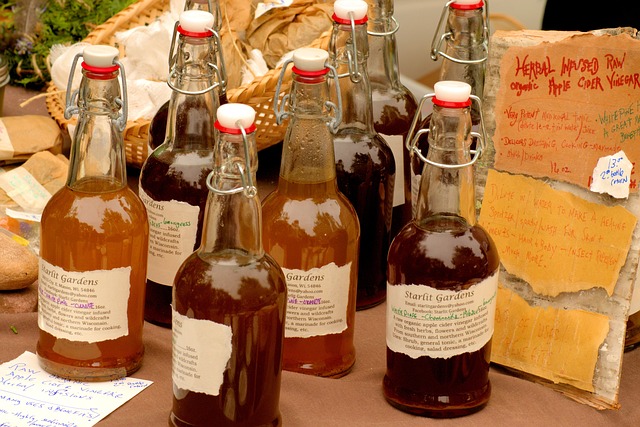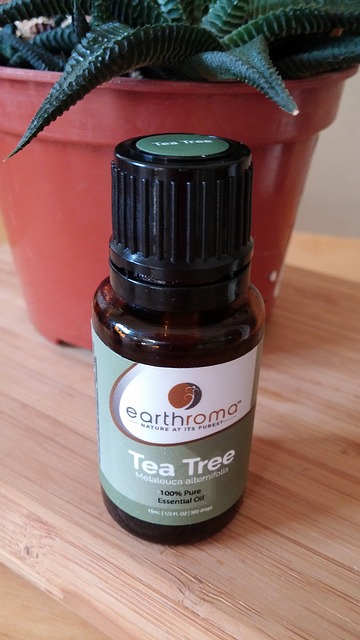Plantar wart is a common medical condition of the foot. It is the result of a viral infection caused by the Human PapillomaVirus (HPV). The HPV virus is highly contagious. You can easily get an infection just by walking barefoot in public such as gyms, pools, and locker rooms. If you have the infection, your first option is to try a few plantar wart home remedies with household items such as:
- apple cider vinegar
- duct tape
- tea tree oil and
- salicylic acid
While most people have found these home remedies excellent for plantar wart removal, most doctors don’t recommend them. Here’s why.
Information About 4 Plantar Wart Home Remedies
Apple Cider Vinegar
Vinegar is known as a household disinfectant as well as a method to preserve food. It also one of the oldest known home remedies for various skin disorders. And for this reason, people began using apple cider vinegar to treat warts.
How to use apple cider vinegar for plantar wart removal
There are a couple of methods to treat plantar warts with apple cider vinegar. The first method involves using:
- apple cider vinegar
- water
- a cotton ball and
- a bandage or duct tape
- Mix one-part water with two parts of apple cider vinegar.
- Soak the cotton ball on the mixture and apply directly to the affected part of your foot.
- Cover the cotton ball with a bandage or tape. On the next day, remove the cotton ball and toss it away.
- Repeat this procedure every night until your plantar wart falls off.

The second method involves soaking your affected foot in a mixture of water and vinegar.
- Mix equal parts of water and apple cider vinegar in a large container or bucket.
- Submerge your affected foot for about 15 minutes every day.
- Repeat this procedure every day until the wart peels off.
Note that vinegar contains between 4% to 8% acetic acid. Apple cider vinegar is a weak acid that can kill some types of viruses and bacteria.
Still, vinegar and other weak acids can cause chemical burns on your skin. And so, it is necessary to dilute the vinegar in water. Always apply the mixture of water and vinegar on your skin to avoid pain or burning sensation.
What do studies say about apple cider vinegar?
Do not ingest or apply apple cider vinegar on the skin to combat viral infections. Scientific studies show no evidence of using vinegar as an anti-infective agent against viral infections.
Salicylic acid
Salicylic acid is the main ingredient in many over-the-counter (OTC) skin treatment products. The salicylic acid found in ointments and creams is usually in higher concentrations.
Salicylic acid for plantar wart treatment comes in pad format, liquid, patch, and gel. These products aid in the shedding of the skin around the wart.
How to use Salicylic acid for plantar wart removal
Here’s the usual procedure of using salicylic acid for treating warts:
- Wash the affected area.
- Soak the area in warm water.
- Using a pumice stone or emery board, gently remove the top layer of the softened skin.
- Wait for the skin to dry before applying your salicylic acid solution.
Patches
If you’re using the patches, don’t forget to change them every 24 to 48 hours. Be careful when using the patches. They have higher salicylic acid concentrations than liquids. Aggressive treatment of warts may cause infection to the affected area.
Liquids
Apply liquid salicylic acid every day. You need to repeat the application for several weeks. In some cases, it may take several months to see the results.
There are times you may feel soreness or pain on the skin around the wart. Pause the treatment and then start again a few days later.
What do studies say about Salicylic acid?
Non-prescription salicylic products may help to dry out your plantar wart. And, may eventually lead to wart removal.
The American Academy of Dermatology or AAD recommends changing the tape every 48 hours to speed up the healing process. The wart may completely disappear after repeated application.
Many people have successfully removed their warts using salicylic acid. Yet, there is not enough scientific studies confirming its effectiveness.
Duct Tape
Using duct tape is one of the most well-known plantar wart home remedies. The idea behind it is that duct tape can help “peel away” wart layers until the HPV virus infection disappears.
How to use duct tape for plantar wart removal
Here are a few steps of using duct tapes to remove plantar warts:
- Cut a small piece of duct tape slightly larger than the size of your wart so you can grip to rip it off later.
- Stick the tape into the affected area covering the wart.
- Leave the tape on the for a couple of days and then take it off.
- Soak the affected area in warm water. And then, gently remove the dead layers of tissue using an emery board or pumice stone. Allow the affected area to dry before sticking the tape.
- Repeat the process until the wart layers come off.
What do studies say about duct tape?
Duct tapes have many uses for crafting and also as a tool with endless uses around the house. But many people have been using them as a topical treatment for warts as well.
Although a harmless practice, there are no scientific studies that prove using duct tape is effective at getting rid of warts.
Tea tree oil
 Tea tree oil is one of the oldest home remedies people use to treat skin problems such as acne, wounds, and fungal infections. Since tea tree oil is known for its many healing properties, it may also work for all types of warts.
Tea tree oil is one of the oldest home remedies people use to treat skin problems such as acne, wounds, and fungal infections. Since tea tree oil is known for its many healing properties, it may also work for all types of warts.
How to use tea tree oil for plantar wart removal
To try this remedy:
- Dilute tea tree oil in water.
- Soak a q-tip into the diluted tea tree oil solution.
- Apply a small amount of the solution into the wart. Do this treatment twice a day.
- Repeat the procedure every day until the wart disappears.
Keep in mind that tea tree oil is available in a variety of strengths. And so, you must dilute the tea tree oil in water before applying it directly on your skin. You can also mix it with carrier oils such as olive or almond oil.
What do studies say about tea tree oil?
There is one successful case of using tea tree oil for wart treatment. In a study published in the Complementary Therapies in Clinical Practice, the affected finger of a child was healed using tea tree oil.
According to the study, the oil was applied to the lesions once a day. The report further stated that warts all disappeared after 12 days of treatment.
Still, it is uncertain whether tea tree oil is effective for plantar wart removal. There are not enough studies to prove its effectiveness to fight all types of warts.
The Bottom Line
Most plantar warts are not harmful and slowly come off without treatment according to the American Academy of Dermatology. But, it may take up to 2 years before warts disappear. The reason you need to treat the lesions with home remedies is to speed up the healing process. The more serious concern here is that it is highly contagious and can spread quickly.
There is no known cure for plantar warts. It is your immune system that resolves the wart, not the home remedies.
Warts don’t go away easily since thick layers of your skin protect the virus. The HPV virus goes undetected by your immune system for several months.
Hence, doctors attack warts with irritants to get your immune system’s attention. Once alerted, your immune system combats the HPV virus and eventually clearing the wart from your affected foot.
There are several ways doctors treat plantar warts in their office. One effective treatment is through cryotherapy. This treatment involves freezing the affected skin using liquid nitrogen at temperatures below -196°C.
The Takeaway on Plantar Wart Home Remedies
If plantar wart home remedies did not work after several months of treatment, you need to see your doctor. He or she may refer you to a specialist in disorders of the feet (podiatrist) or the skin (dermatologist).
Adelaide Foot and Ankle podiatrists and staff have 45 years of combined experience in treating foot problems and overall foot care. Contact us now for an appointment.



